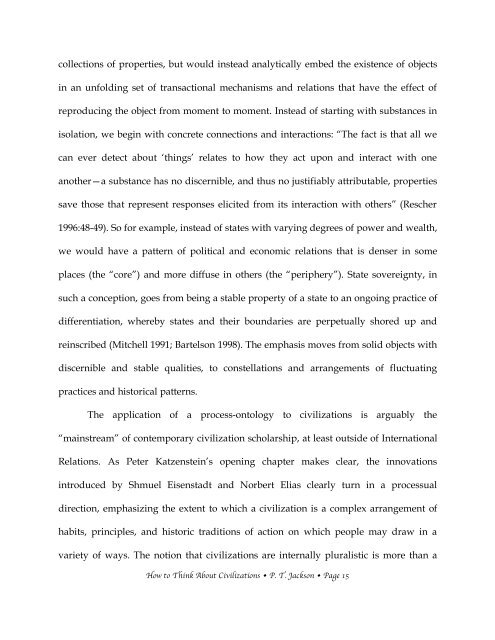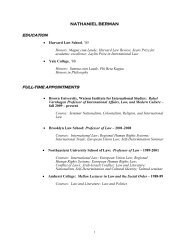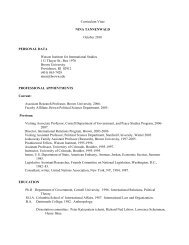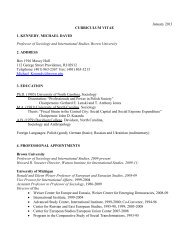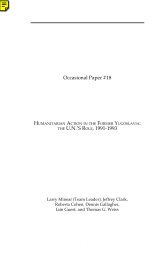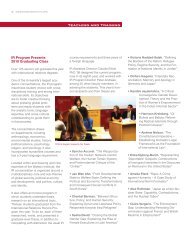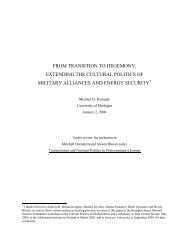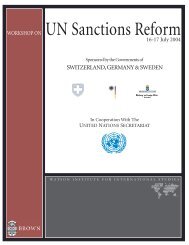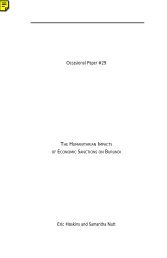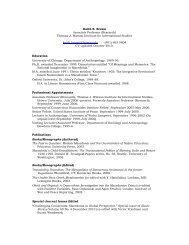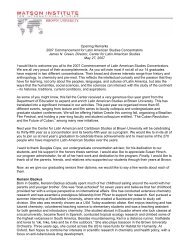How to Think About Civilizations - The Watson Institute for ...
How to Think About Civilizations - The Watson Institute for ...
How to Think About Civilizations - The Watson Institute for ...
Create successful ePaper yourself
Turn your PDF publications into a flip-book with our unique Google optimized e-Paper software.
collections of properties, but would instead analytically embed the existence of objects<br />
in an unfolding set of transactional mechanisms and relations that have the effect of<br />
reproducing the object from moment <strong>to</strong> moment. Instead of starting with substances in<br />
isolation, we begin with concrete connections and interactions: “<strong>The</strong> fact is that all we<br />
can ever detect about ‘things’ relates <strong>to</strong> how they act upon and interact with one<br />
another—a substance has no discernible, and thus no justifiably attributable, properties<br />
save those that represent responses elicited from its interaction with others” (Rescher<br />
1996:48-49). So <strong>for</strong> example, instead of states with varying degrees of power and wealth,<br />
we would have a pattern of political and economic relations that is denser in some<br />
places (the “core”) and more diffuse in others (the “periphery”). State sovereignty, in<br />
such a conception, goes from being a stable property of a state <strong>to</strong> an ongoing practice of<br />
differentiation, whereby states and their boundaries are perpetually shored up and<br />
reinscribed (Mitchell 1991; Bartelson 1998). <strong>The</strong> emphasis moves from solid objects with<br />
discernible and stable qualities, <strong>to</strong> constellations and arrangements of fluctuating<br />
practices and his<strong>to</strong>rical patterns.<br />
<strong>The</strong> application of a process-on<strong>to</strong>logy <strong>to</strong> civilizations is arguably the<br />
“mainstream” of contemporary civilization scholarship, at least outside of International<br />
Relations. As Peter Katzenstein’s opening chapter makes clear, the innovations<br />
introduced by Shmuel Eisenstadt and Norbert Elias clearly turn in a processual<br />
direction, emphasizing the extent <strong>to</strong> which a civilization is a complex arrangement of<br />
habits, principles, and his<strong>to</strong>ric traditions of action on which people may draw in a<br />
variety of ways. <strong>The</strong> notion that civilizations are internally pluralistic is more than a<br />
<strong>How</strong> <strong>to</strong> <strong>Think</strong> <strong>About</strong> <strong>Civilizations</strong> • P. T. Jackson • Page 15


